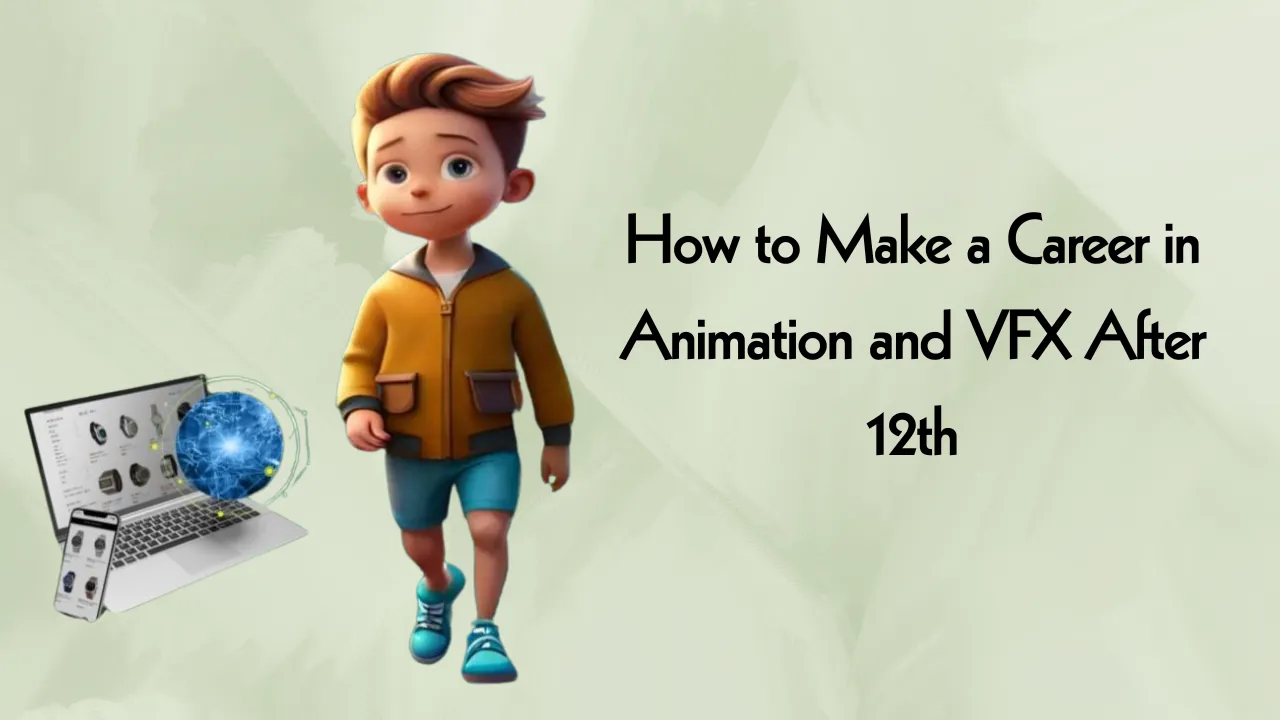Career in Animation and VFX After 12th: If you’re wondering how to make a career in animation and VFX after 12th, you’re already on a creative path filled with exciting opportunities. With the entertainment, gaming, advertising, and digital media industries booming, skilled animators and VFX artists are in high demand across India and the world.
In this guide, we’ll explain step-by-step how to make a career in animation and VFX after 12th, covering courses, essential skills, career options, salaries, and how to grow in this dynamic field.
Lay the Educational Foundation
To make a career in animation and VFX after 12th, the first step is choosing the right course. Whether you prefer a full degree, diploma, or certificate, there are plenty of options to get started.
Degree Courses
- B.Sc. in Animation/VFX/Multimedia
- B.Des. in Animation or Visual Communication
- BA in Animation/Multimedia
- BFA in Animation
- BCA with specialization in Animation/VFX
These 3-4 year programs offer a solid understanding of both creative and technical aspects.
Diploma Courses
- Diploma in Animation and VFX
- Diploma in 2D/3D Animation
- Diploma in Visual Effects
Diplomas are ideal if you want quicker, skill-focused training.
Certificate & Online Courses
Short-term certificates in software like Maya, Blender, or After Effects are great for specific skills. Platforms like Coursera and Udemy offer flexible learning options.
Top Institutes in India
If you’re serious about how to make a career in animation and VFX after 12th, consider reputed institutes like:
- National Institute of Design (NID)
- Whistling Woods International
- MAAC
- Arena Animation
- Frameboxx
- Srishti Institute of Art, Design & Technology
These institutes provide quality education and industry exposure.
Develop Essential Skills
Success in animation and VFX isn’t just about courses. You must build key skills:
- Drawing and Design: Basic sketching and understanding of visual aesthetics.
- Software Mastery: Learn tools like Adobe After Effects, Maya, Blender, Nuke, and Toon Boom.
- Storytelling: Every animation or VFX project tells a story—narrative skills are vital.
- Attention to Detail: Precision is critical in this field.
- Teamwork: Most projects involve collaboration.
- Time Management: Meeting project deadlines is a must.
- Adaptability: Stay updated as technology and trends evolve.
Gain Practical Experience
To truly make a career in animation and VFX after 12th, real-world experience is crucial:
- Internships: Apply to studios, gaming companies, or ad agencies.
- Freelancing: Start taking small projects online to build your reputation.
- Personal Projects: Create your own animations or VFX sequences to practice and innovate.
- Collaborations: Work with peers on short films or creative projects.
Build a Strong Portfolio and Demo Reel
Your portfolio is your ticket to job opportunities. It should include:
- Best design samples
- Completed animation projects
- A demo reel (1-2 minute video showing your top work)
When you make a career in animation and VFX after 12th, your portfolio often matters more than your academic scores.
Network and Stay Updated
Networking is key in creative industries:
- Attend animation festivals and workshops.
- Join online forums and social media groups.
- Follow leading artists and studios for inspiration.
- Keep learning new tools and techniques through online courses.
Career Opportunities in Animation and VFX
Once you’ve built your skills, here are some exciting roles to explore:
- 2D/3D Animator
- VFX Artist
- 3D Modeler
- Compositing Artist
- Motion Graphics Designer
- Storyboard Artist
- Character Designer
- Rigging Artist
- Game Animator
- VFX Supervisor
- Animation Director
The demand spans across industries like film, TV, gaming, advertising, education, and even virtual reality.
Salary Expectations
When starting to make a career in animation and VFX after 12th, entry-level salaries typically range between ₹2 to ₹5 LPA (Lakhs Per Annum). With 3-5 years of experience, professionals can earn ₹6 to ₹12 LPA. Senior roles like VFX supervisors or animation directors can command ₹15 LPA or more, especially in larger studios or international projects.
Freelancers can also earn well, depending on project complexity and client base.
FAQs
1. Can I pursue animation and VFX after 12th without a design background?
Yes, students from any stream can start, as long as they have creativity and willingness to learn.
2. Which software should I learn for animation and VFX?
Start with Adobe After Effects, Maya, Blender, and Photoshop. These are industry-standard tools.
3. How important is a degree for a career in animation and VFX?
A degree helps, but your portfolio and skills matter more in this creative field.
4. Are there freelancing opportunities in animation and VFX?
Yes, many professionals work as freelancers on global projects through platforms like Upwork and Fiverr.
5. What industries hire animators and VFX artists?
Film studios, gaming companies, advertising agencies, digital marketing firms, and even education tech companies.
Final Thought
If you’re passionate about creativity and technology, learning how to make a career in animation and VFX after 12th can lead you to a fulfilling profession. Focus on building your skills, gaining practical experience, and creating a standout portfolio. Stay patient, keep learning, and the opportunities will follow. If this guide inspired you, feel free to comment below or share it with friends who are also exploring creative careers. Explore more resources on design, gaming, and digital media to fuel your journey!













